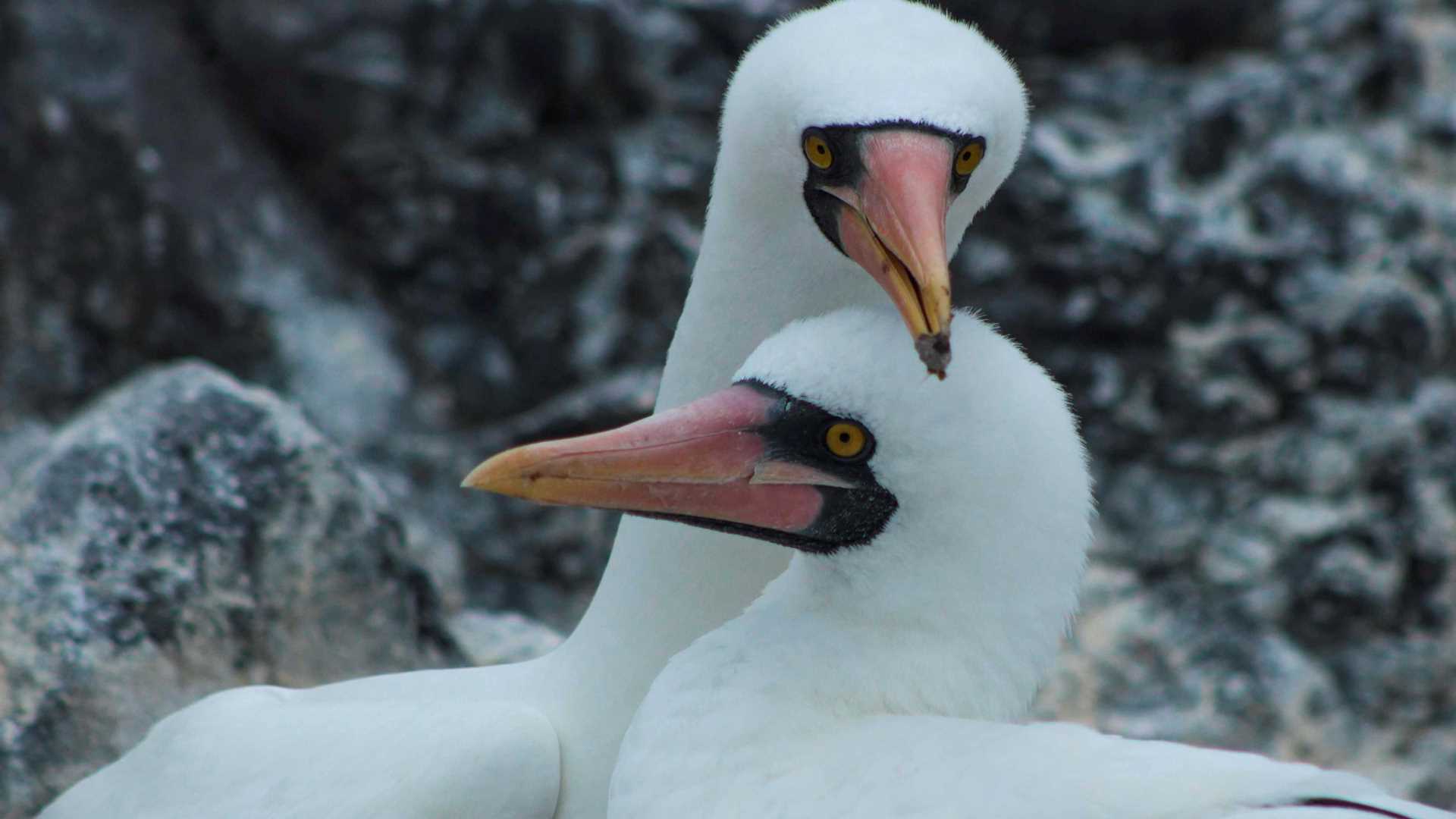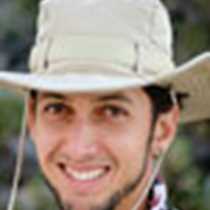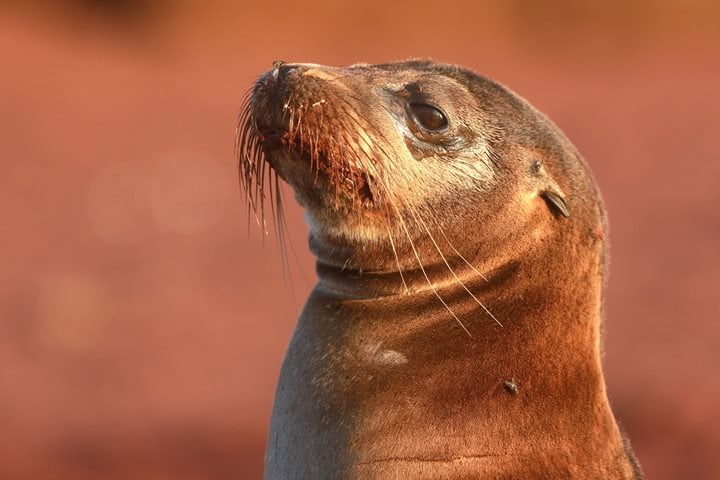Today we started our activities early. With paddleboards and kayaks, we explored the shoreline and cliffs of Gardner Bay. A sunny morning welcomed us to enjoy the beautiful white sand beach full of Galapagos sea lions and mockingbirds. Our young guests had the chance to interact with the sea lions up close and swim with them near the shore. Deep water snorkelers explored Gardner Islet where many playful sea lions also followed our groups.
In the afternoon, we went walking inland at Punta Suarez. The island was still not showing much green as the dry season has been extended. Marine iguanas piled up everywhere, showing the green and red colorations typical of this species.
Galapagos doves and lava lizards were all around the trail. We also came across some waved albatrosses still nesting on the island. Some juvenile albatrosses were already taking off to live on the wing for several years. Others sat around the nesting sites with fluffy plumage on their heads. Soon, they will all be gone when the wet season comes.







